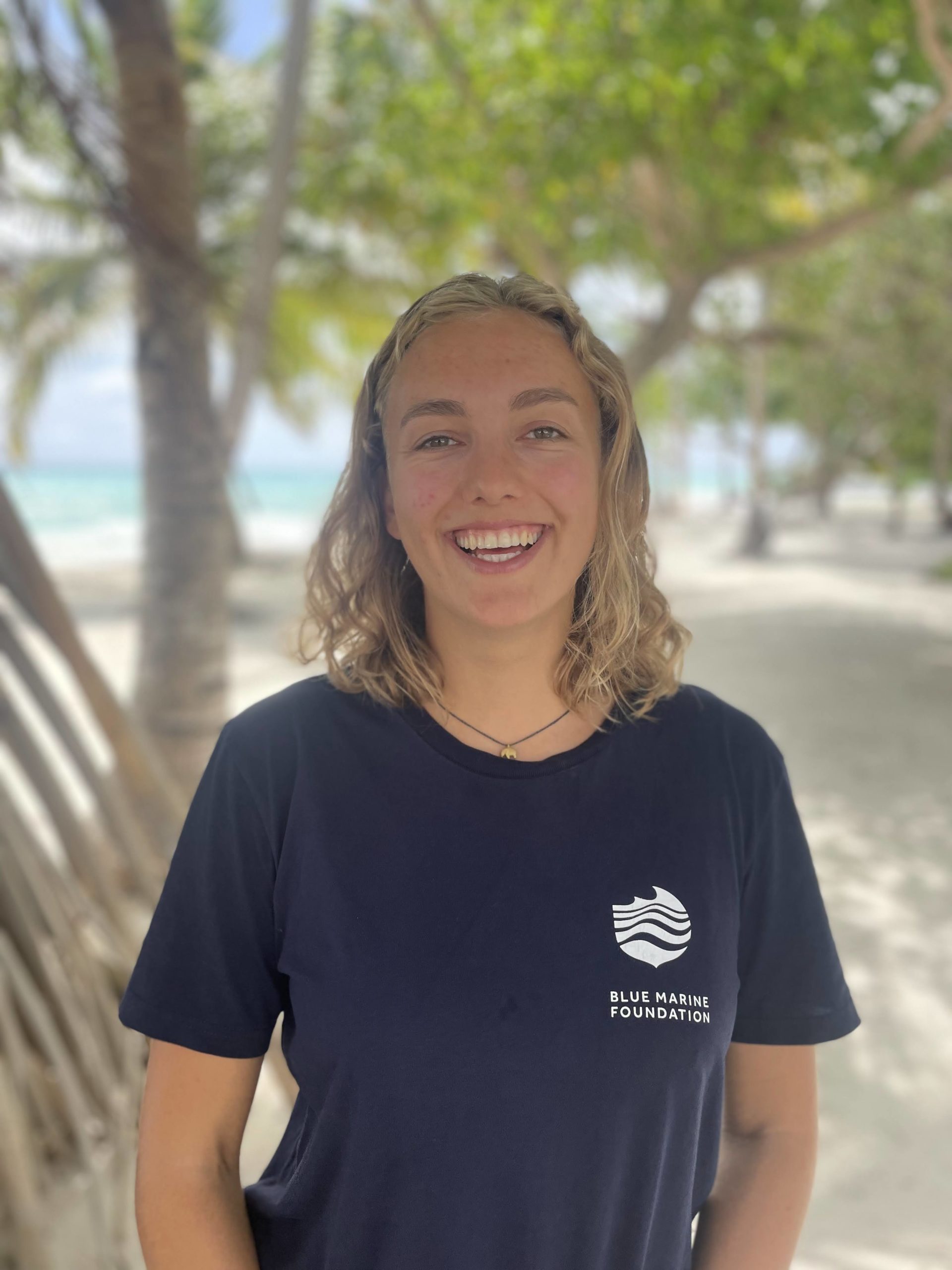Our world-leading marine research underpins a wide range of undergraduate and postgraduate programmes. In our MSc Graduate in Focus series we look at the achievements of our MSc graduates who have excelled in marine science around the world since studying with us. Today we chat with Mara Fischer, MSc Marine Environmental Management graduate, who is now completing a PhD with us at the University of Exeter.

Hi Mara! Can you tell me a little about your studies before you started your PhD?
I actually grew up quite far from the sea in Berlin, Germany. But I’ve always been really fascinated by it, especially by all the unknown surrounding it and how much there still is that we just don’t know. But I didn’t really get into marine ecology until the end of my undergraduate degree. I studied Ecological and Environmental Sciences at Edinburgh University and then had the opportunity to go on a year abroad to the University of New South Wales in Sydney in my third year. There I had my first chance to take some marine biology modules, which confirmed to me that I was really interested in the marine environment and also helped me to decide what to do for my Masters. That is how I ended up in Cornwall! I came down to do the Marine Environmental Management MSc, which was a really great experience. Now I’ve just started a PhD with Professor Callum Roberts, Dr Ceri Lewis, and Dr Julie Hawkins.

So what are you doing in your PhD?
My PhD is part of a bigger research project called the Convex Seascape Survey, a five-year global multi-partner research programme which aims to better quantify how continental shelves, the shallow seas from 0 down to 200 m, contribute to carbon storage within the oceans. Everyone has probably heard of blue carbon by now, but a lot of the research focus to date has been on coastal vegetated ecosystems like mangroves or seagrasses, which are very important as they are very efficient at taking in carbon, but they just don’t cover a very large area of the seabed. The Convex Seascape Survey wants to focus on continental shelves, beyond those coastal ecosystems, because no one really knows how much carbon there is in the sediment and where potential hotspots might be. It’s very important to get better data on this, so we can then incorporate that into climate change mitigation policies.

How did your masters project lead into what you are doing now?
Actually, my masters project was very different from what I am doing now. For that, I was looking at coral reefs and was lucky to be able to go out to do fieldwork in the Maldives. This was really exciting for me because I completed my undergraduate dissertation during Covid, so it was all desk-based. The project I had been planning to do while I was still in Australia didn’t go ahead so it was great to have that opportunity this time round. I collected data in the Maldives for 6 weeks, looking at the recovery of the coral reefs in Laamu Atoll in the south of the country from the 2016 coral bleaching event, which was quite severe in the Maldives. The reefs had already been surveyed once in 2019, so we were repeating those surveys, looking at the same sites again and adding in some new sites too. I was specifically looking at the benthic community, using coral cover as a proxy for reef health. It was exciting because we found that coral cover had increased from 17% in 2019 to about 27% in 2022, which is an increase just shy of 70%! However, before the bleaching event, coral cover in the atoll was at about 40-50% so there is still a long way to go, but we are on the right track.
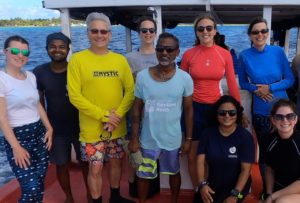
And you have contributed to a report that has been published recently?
Yes, it was basically building on my master’s project, which was in collaboration with Blue Marine Foundation. I was working on the benthic community and one of my peers was working on the fish assemblages, so we combined everything into one report with some additional analyses. Overall, the reef health is looking quite good across Laamu Atoll. The total abundance (number of fish) has increased since 2019, so that was very positive and there were fish families like parrotfish, which are ecologically important, and snappers which are more commercially important, which have increased over time. Other families like groupers and butterflyfish had declined which is less exciting, and we don’t really know why yet. This time we also collected fish biomass data for the first time. We couldn’t compare across the years but it would be interesting in the future to have this as baseline data and then assess how the biomass changes, as this doesn’t just tell you how many fish there are, it also tells you how big they are and you can see if the average sizes of fish are getting smaller, which you often see with fishing pressure.
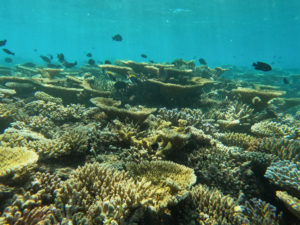 Photo Credit: Prof Callum Roberts
Photo Credit: Prof Callum Roberts
We also looked at the relationship between coral cover, fish abundance and biomass. We found on sites that had a higher coral cover, and therefore were likely more structurally complex and provided more habitat, that there were higher numbers of fish. But for the biomass of the parrotfish family we found the opposite trend. Sites which had a lower coral cover had higher fish biomass. Parrotfish often feed on coral rubble, so that might be why they preferred the more degraded sites. For all of the other families, there wasn’t a clear relationship between coral cover and biomass so we probably need a bit more data to see a trend there.
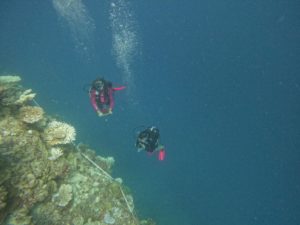
Additionally, we looked at the relationship between fishing intensity, coral cover, and fish abundance. This showed that areas with high fishing intensity had less coral cover and fewer fish, which could indicate the need for some restraints on fishing in those areas to allow the reefs there to recover. So that’s our main findings from that report. It has been published on the Maldives Resilient Reefs website, if anyone wants to read the full report.
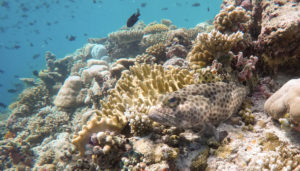 Photo Credit: Prof Callum Roberts
Photo Credit: Prof Callum Roberts
So, what is next in your PhD journey?
I have actually just come back from Millport on the Isle of Cumbrae in Scotland, where the first field study of the Convex Seascape Survey – the ‘Great British Bioturbation-athon’ took place. The aim of this experiment was to investigate how different creatures living in the seabed (such as worms, clams, and brittle stars) mix seafloor sediments through their burrowing action (a process known as bioturbation) and how this, in turn, affects carbon drawdown into muddy sediments. We went out boat sampling for two days to collect as many different species as possible, which we then monitored in a lab experiment for ten days. Whilst this research will not specifically feed into my PhD project, as I will be looking more at organisms living above the seabed such as fish, it was a great opportunity for me to get stuck into the Convex project and to gain some new field and lab skills!
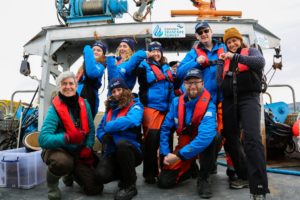
Before going up to Scotland, I started off my PhD by doing a literature review on the role of fish and other marine vertebrates in ocean carbon sequestration. My PhD project is looking more at the biological side of things and will try to find out how organisms such as fish facilitate carbon storage on continental shelves. There has been quite a bit of research on how fish and marine vertebrates contribute to the movement of carbon from the surface ocean to the deeper ocean, i.e. below 1000 m, but not much is known about the cycling and burial in sediments on continental shelves. I will also look at how human disturbance, for example from bottom-towed fishing gears like trawlers, affects these fish-carbon interactions and how this in turn influences long-term carbon burial in shelf sediments. We are now starting to plan some field expeditions for next year, so that’s really exciting!
What skills do you feel like you have gained from your Masters degree that you will now use going forwards in your PhD?
Starting a PhD is quite strange because there is a lot less structure than during a taught Masters. You don’t have set assignments and deadlines or lectures. It is a lot more self-directed which took some getting used to, but I really enjoy it now. One of the major things I’d say the Masters has given me is probably the practical fieldwork experience. I did not have a lot of experience before the Masters but then we went on a fieldtrip to the Maldives, where we learnt a lot of tropical marine survey techniques and fish identification. That really helped me with my Masters project, and developed my scientific diving skills. My PhD project will also require quite intensive fieldwork, so I think this added experience definitely helped me when I was applying for the PhD. I will still be learning a lot of new skills, like sediment coring and using remotely operated vehicles but the Masters has prepared me well for the scientific diving side of things. It was also a small year group, so we had really great one-on-one contact with the lecturers, so there was always support if you needed it.


